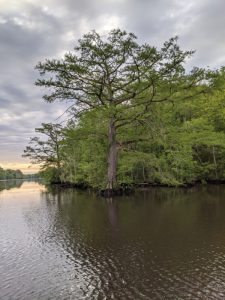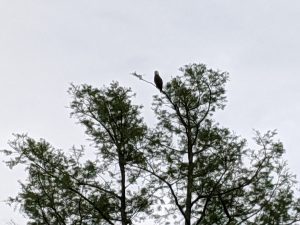
BALD CYPRESS
We launched out of Snow Hill, MD onto the Pocomoke River around 6:30a. It was quite chilly and I wore my winter coat for the ride out. The tide was outgoing and the water was like glass. Again, we witnessed a pair of bald eagles. They were just hanging out in trees adjacent to the river. In the background you could hear their eaglet.

Bald eagles are found near large bodies of open water with an abundant food supply and old-grown trees for nesting. The bald eagle is an opportunistic carnivore with the capacity to consume a great variety of prey, but feed mainly on fish. They build the largest tree nests of any North American bird which are used repeatedly over many years. Selected trees must have good visibility, be over sixty-six feet tall, an open structure, and proximity to prey. Bald eagles reach sexual maturity around age five which is around the time their head and tail turn white. Females are twenty-five percent larger than males. The name “bald” derives from an older meaning of the word “white headed” referring to the white head and tail feathers and their contrast with the darker body, as in piebald. The average lifespan in twenty years. The bald eagle is the national bird of the United States.
We did most of our fishing in lily pads using a buzz bait. I caught a large mouth bass and a chain pickerel. The pickerel came at the bait twice in the lily pads and then the final time outside of the protection of the lily pads. It was so fun to watch! John did catch two crappie along the bank with a spinner bait.